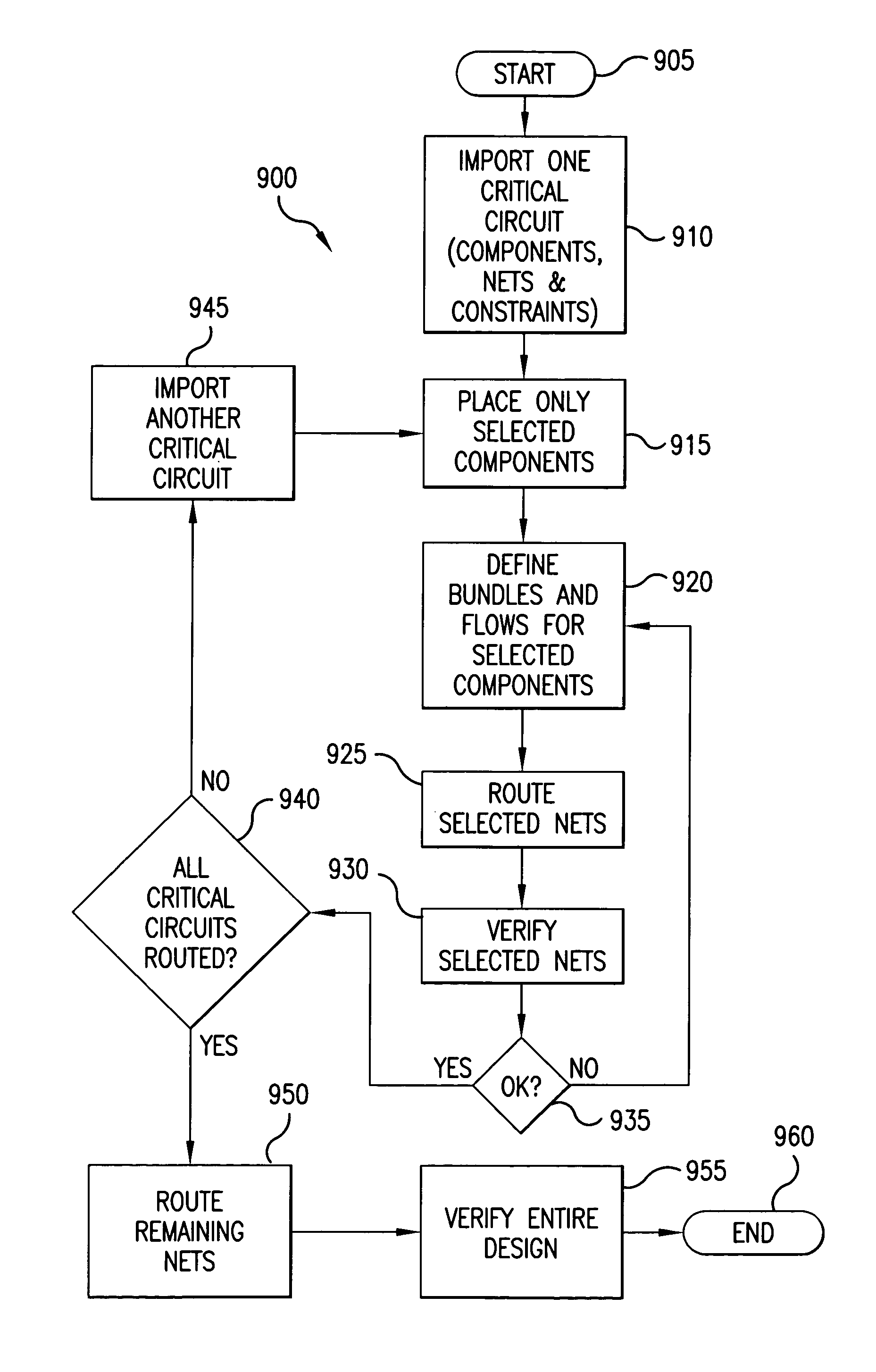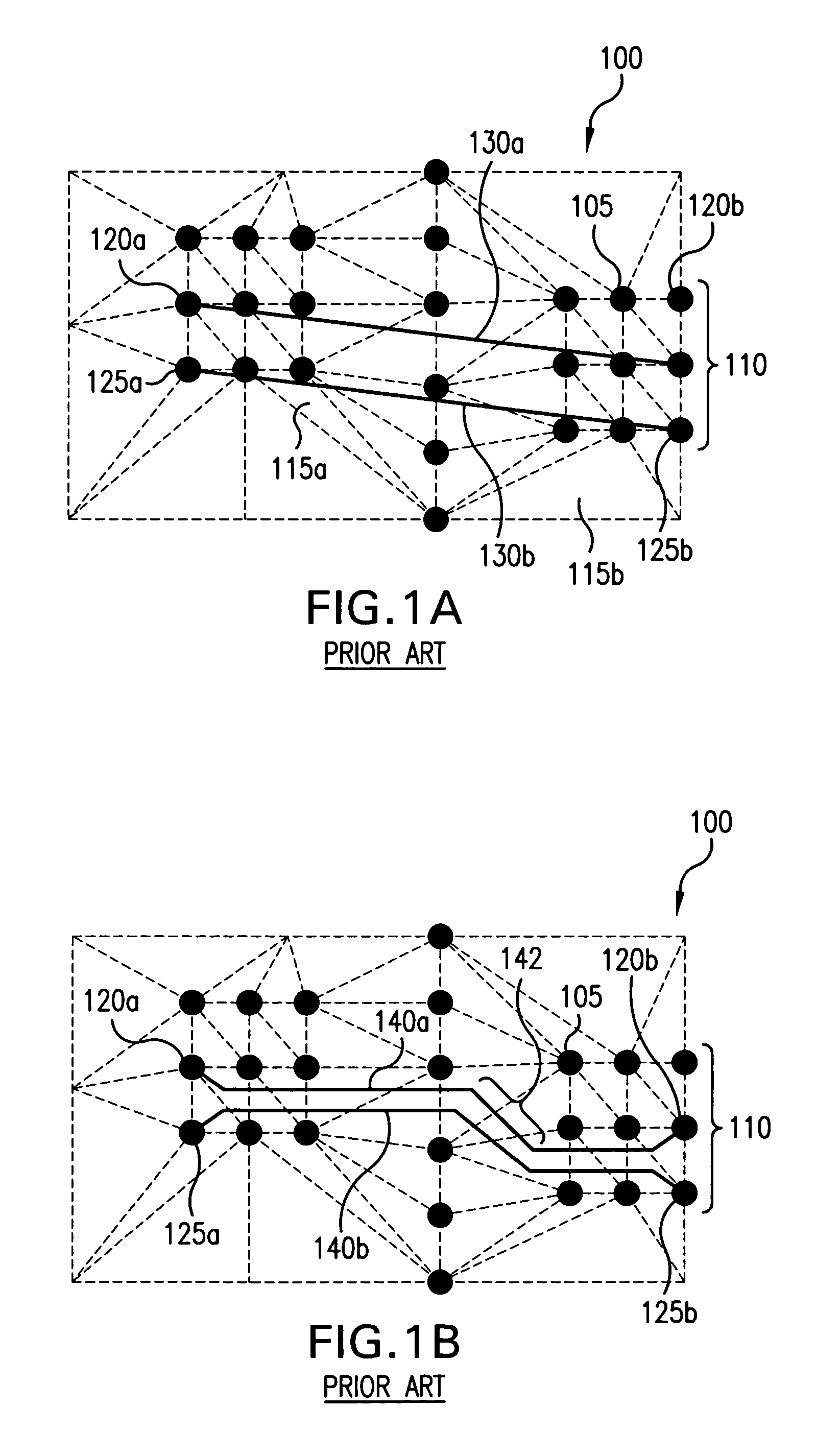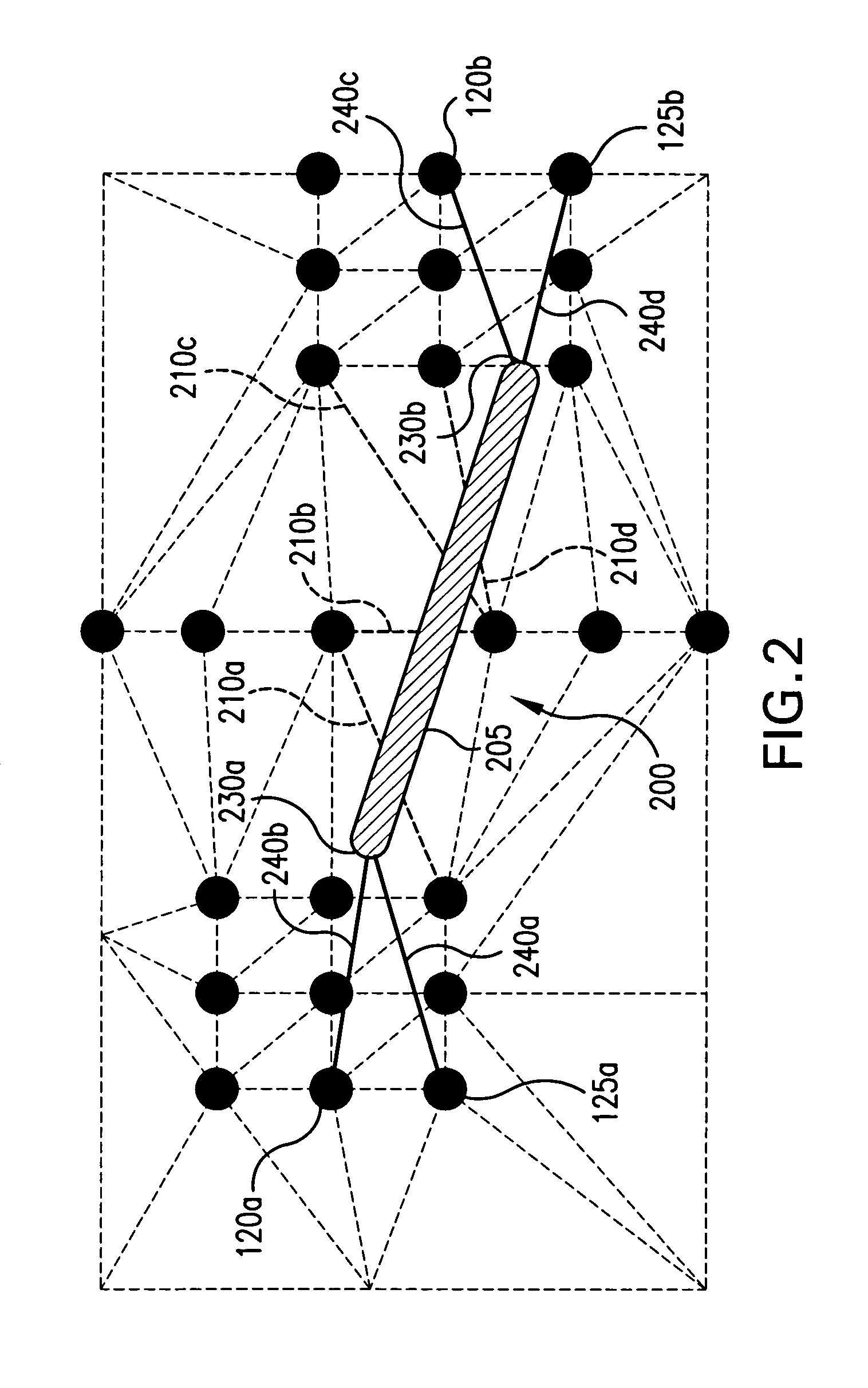User-guided autorouting
a user-guided, auto-route technology, applied in the direction of instruments, computing, electric digital data processing, etc., can solve the problems of increasing the scope of the interconnect problem in terms of connection count and layout complexity, circuit design and manufacturing technologies outpacing advances in routing engine technology, and the most difficult and most challenging designs continued to be routed manually
- Summary
- Abstract
- Description
- Claims
- Application Information
AI Technical Summary
Problems solved by technology
Method used
Image
Examples
Embodiment Construction
[0035]Various aspects of the present invention will be described using terminology adapted to the field of circuit design and it is believed beneficial to the understanding of the disclosure to first define certain terms. It is to be understood that while the invention is described in terms of electronic circuit design, the applicability of the invention extends to other fields of endeavor where path finding and routing is involved.
[0036]As is used in the art, a “Design” is an Electronic Design Automation (EDA) database of information describing a Printed Circuit Board (PCB), an Integrated Circuit (IC) or an IC Package. A graphical representation of a portion of a Design is illustrated at 100 in FIGS. 1A-1B. A “Terminal”105 is a location on one or more layers of a Design to which electrical signals may be connected. For a PCB, Terminals correspond to the pins, pads, and balls of the elements in the circuit. For an IC Package, Terminals are typically IC bumps or package balls. A Term...
PUM
 Login to View More
Login to View More Abstract
Description
Claims
Application Information
 Login to View More
Login to View More - R&D
- Intellectual Property
- Life Sciences
- Materials
- Tech Scout
- Unparalleled Data Quality
- Higher Quality Content
- 60% Fewer Hallucinations
Browse by: Latest US Patents, China's latest patents, Technical Efficacy Thesaurus, Application Domain, Technology Topic, Popular Technical Reports.
© 2025 PatSnap. All rights reserved.Legal|Privacy policy|Modern Slavery Act Transparency Statement|Sitemap|About US| Contact US: help@patsnap.com



